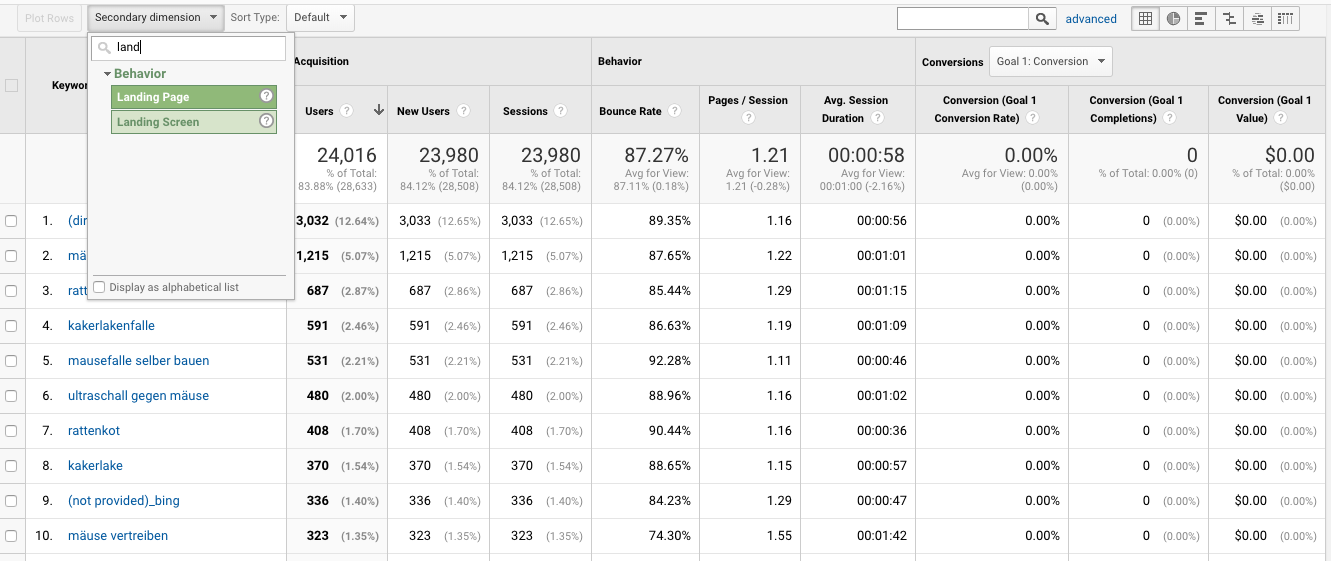Improving Data Accuracy: Google Analytics Secondary Dimension Insights
Wiki Article
Unlocking the Power of Second Measurement Analytics for Enhanced Data Insights and Decision-Making
In the realm of data analytics, main dimensions typically take the spotlight, however the real depth of insights exists within the world of second measurements. By utilizing the power of secondary dimension analytics, companies can introduce concealed patterns, reveal relationships, and remove much more significant conclusions from their data.
Significance of Additional Measurements
Checking out the significance of additional dimensions in analytics introduces the concealed layers of data understandings essential for educated decision-making in different domain names. Secondary measurements offer a deeper understanding of key information by providing additional context and point of views. By integrating secondary measurements right into analytics, companies can draw out more comprehensive and nuanced insights from their datasets.One key value of second measurements is their capability to sector and categorize key information, enabling for a much more in-depth evaluation of certain parts within a dataset. This segmentation allows services to identify patterns, patterns, and outliers that might not be obvious when considering the information as a whole. Secondary measurements assist in revealing connections and dependences between various variables, leading to more accurate projecting and predictive modeling - secondary dimension.
In addition, additional dimensions play a critical function in improving data visualization and coverage. By adding secondary measurements to visualizations, such as charts or graphes, analysts can develop a lot more informative and useful representations of data, promoting far better communication of findings to stakeholders. Overall, the integration of second dimensions in analytics is critical in unlocking the complete potential of data and driving evidence-based decision-making.
Key Benefits of Making Use Of Additional Measurements
Using secondary measurements in analytics uses companies a calculated benefit by augmenting the deepness and granularity of data insights. By exploring information utilizing additional dimensions such as time, place, tool type, or customer demographics, organizations can discover patterns, patterns, and connections that may otherwise remain hidden.Moreover, the usage of additional dimensions enhances the context in which main information is analyzed. By leveraging additional measurements in analytics, companies can harness the complete potential of their information to drive far better decision-making and achieve their company objectives.
Advanced Information Analysis Methods
A deep study innovative information analysis strategies exposes sophisticated approaches for removing beneficial insights from intricate datasets. One such strategy is maker knowing, where algorithms are used to recognize patterns within data, forecast end results, and make data-driven decisions. This approach enables the automation of logical model structure, making it possible for the handling of huge volumes of information at a much faster pace than standard approaches.One more sophisticated strategy is predictive analytics, which utilizes analytical algorithms and equipment discovering methods to anticipate future outcomes based upon historic information. By examining patterns and trends, companies can expect client habits, market fads, and prospective threats, empowering them to make positive choices.
Furthermore, message mining and view evaluation are beneficial strategies for extracting insights from unstructured information sources such as social media comments, customer testimonials, and survey responses. By examining text information, companies see here now can comprehend consumer point of views, identify emerging trends, and enhance their solutions or items based upon responses.
Enhancing Decision-Making Through Second Dimensions

Enhancing decision-making via additional dimensions enables businesses to make even more educated and targeted tactical selections. By segmenting client data based on second dimensions like purchasing history or engagement levels, companies can tailor their marketing strategies to particular target market sectors, leading to improved conversion rates and customer contentment. Second dimensions can help recognize relationships and partnerships in between various variables, making it possible for organizations to make data-driven decisions that drive growth and success.
Executing Secondary Dimension Analytics
When including additional dimensions in analytics, companies can open much deeper understandings that drive critical decision-making and boost overall efficiency. This requires comprehending the details inquiries the company looks for to respond to and the data factors required to resolve them.
see page In addition, organizations must leverage progressed analytics tools and innovations to improve the process of incorporating second dimensions. These devices can automate data processing, evaluation, and visualization, enabling organizations to concentrate on interpreting understandings instead of manual data control.
Conclusion
In final thought, additional dimension analytics play an important function in improving data insights and decision-making processes. By using sophisticated data analysis strategies and implementing secondary measurements successfully, companies can unlock the power of their data to drive strategic organization decisions. The vital benefits of utilizing additional dimensions can not be overemphasized, as they supply a much deeper understanding of information trends and connections. It is crucial for companies to utilize additional measurement analytics to stay competitive in today's data-driven landscape.In the world of data analytics, main measurements often take the limelight, however the real deepness of understandings read this article exists within the realm of secondary dimensions.Using secondary measurements in analytics provides companies a critical benefit by increasing the depth and granularity of information insights. By leveraging second dimensions in analytics, organizations can harness the full potential of their data to drive better decision-making and attain their company purposes.
Implementing data validation procedures and routine audits can aid keep information top quality and dependability.
By utilizing sophisticated data evaluation techniques and applying secondary measurements effectively, companies can open the power of their information to drive calculated service decisions.
Report this wiki page